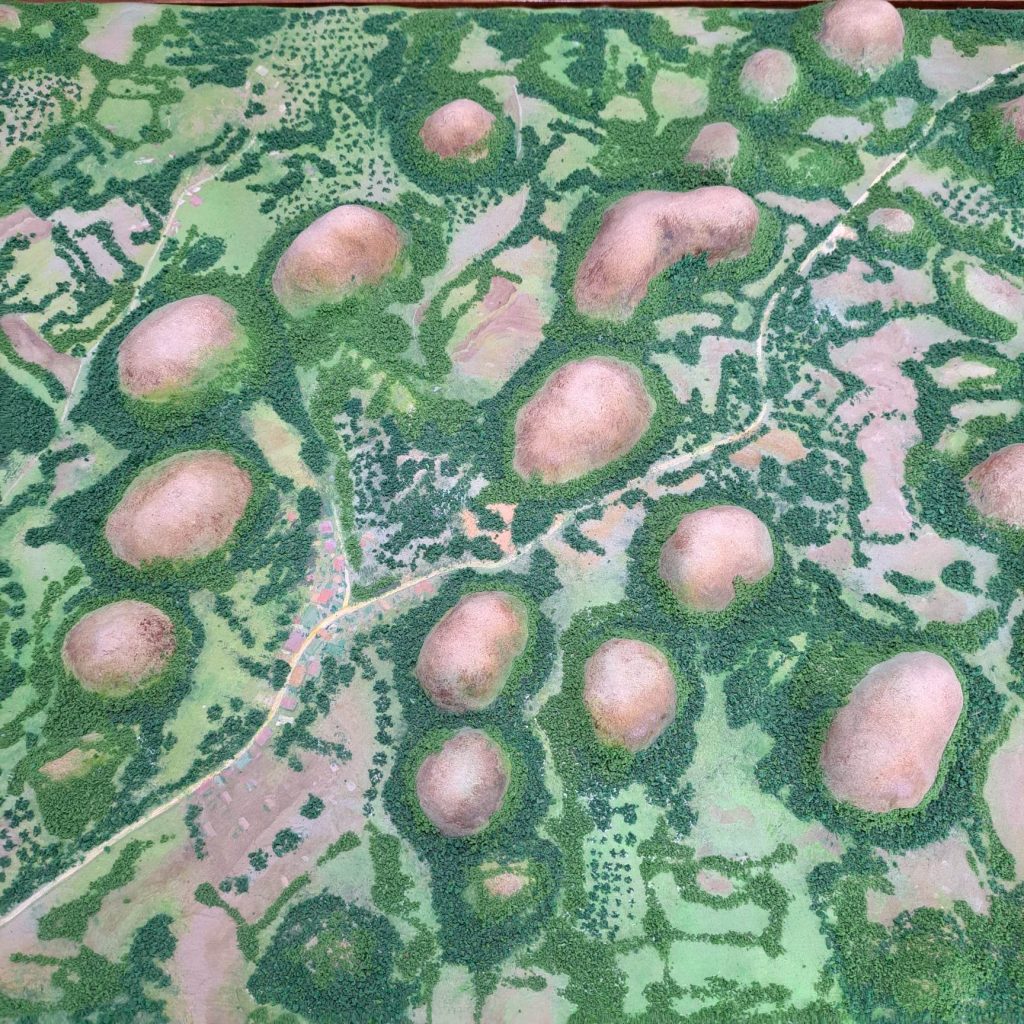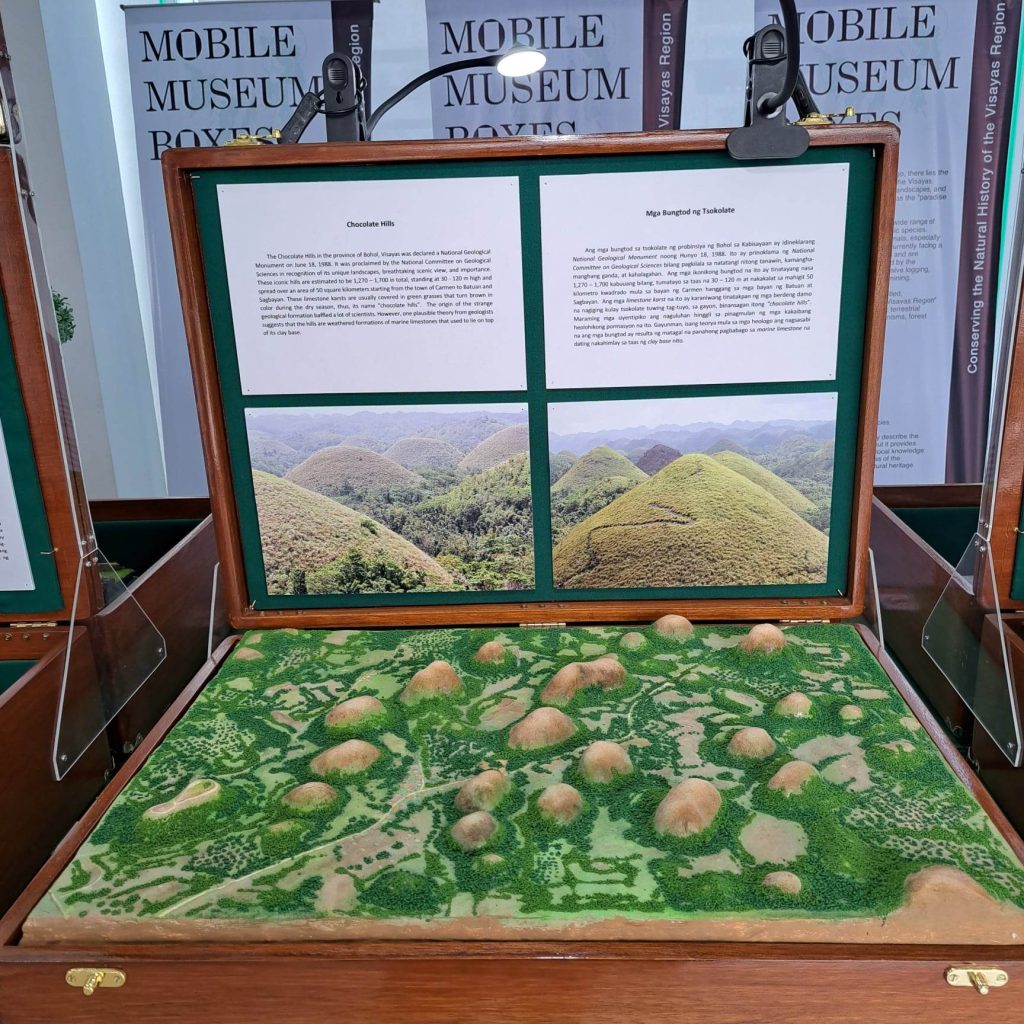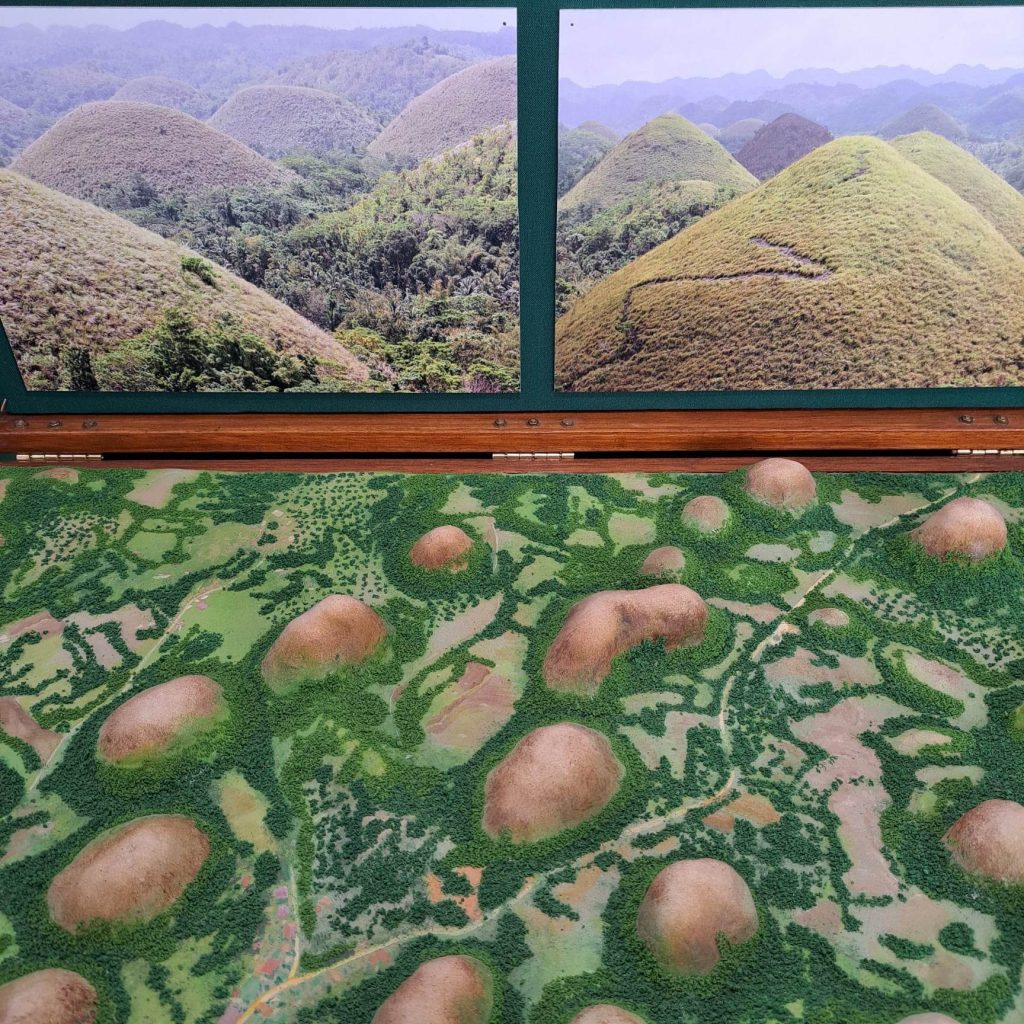Disclaimer: This is not the official press release or communications. The text are taken from the exhibit itself. All credit goes to the National Museum of the Philippines – Western Visayas Regional Museum, International Centre for the Study of the Preservation and for Restoration of Cultural Property (ICCROM), CollAsia Field Projects (Connecting Communities and Collections), and the Cultural Heritage Administration of the Republic of Korea.

The Chocolate Hills in the province of Bohol, Visayas was declared a National Geological Monument on June 18, 1988. It was proclaimed by the National Committee on Geological Sciences in recognition of its unique landscapes, breathtaking scenic view, and importance.

These iconic hills are estimated to be 1,270 – 1,700 in total, standing at 30- 120 m high and spread over an area of 50 square kilometers starting from the town of Carmen to Batuan and Sagbayan. These limestone karsts are usually covered in green grasses that turn brown in color during the dry season, thus, its name “chocolate hills”.

The origin of the strange geological formation baffled a lot of scientists. However, one plausible theory from geologists suggests that the hills are weathered formations of marine limestones that used to lie on top of its clay base.
Pambansang Museo sa Barangay: Bringing Museum Collections to the Fringes
Parts of the Pambansang Museo sa Barangay:
Haból Panay: The Woven Artistry of Western Visayas
Amlig: Biodiversity Conservation in West Visayas Faunal Region
Elephant and Stegodont: The Gentle Giants of Panay
Other helpful exhibits:
Rocks of the Visayan Islands
Shells of the Visayan Region
Rafflesias of the Visayan Islands
Protected Areas of the Visayan Region
The Forest Products
The Forest Stratification
The Kanlaon Volcano
The Pawikan
**Content was only based on the photos I took during my personal visit. I may have missed significant details.
